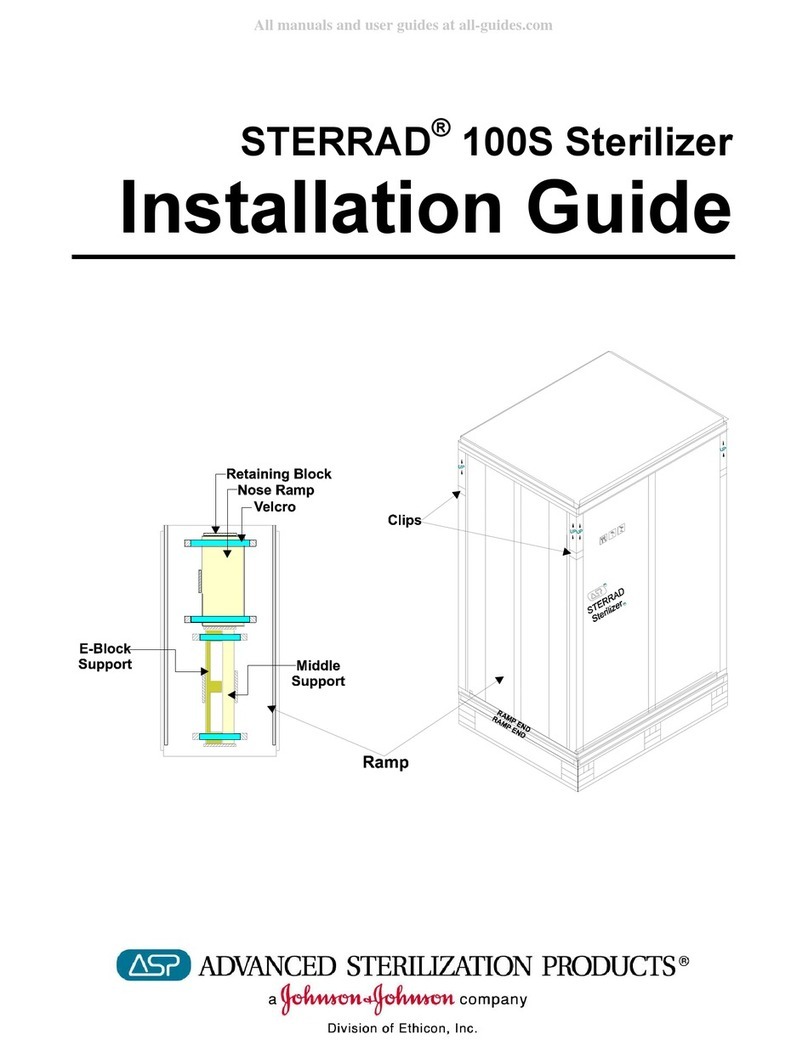
STERRAD®100NX®User’s Guide 3
Disposing of Cassettes...........................................................................................64
Removing a Cassette Disposal Box ..................................................................65
Replacing the Printer Paper ...................................................................................66
Cleaning the Sterilizer Exterior .............................................................................69
Cleaning the Hydrogen Peroxide Monitor Detector Lens .....................................70
PCMCIA Card Handling and Replacement...........................................................71
Data Transfer Using a Memory Stick................................................................72
Sterilizer Disposal..................................................................................................73
Chapter 8. Reports and Files ........................................................................... 75
Displayed Reports .................................................................................................75
Cycle History ....................................................................................................75
Printed Reports.......................................................................................................77
Short Report......................................................................................................77
Parametric Report..............................................................................................77
Long Report ......................................................................................................77
Chapter 9. Access Levels and Supervisor Tasks .............................................. 79
Overview................................................................................................................79
Access Levels.........................................................................................................79
Additional Utilities Menu......................................................................................80
Date and Time Settings..........................................................................................81
Set Date.............................................................................................................82
Set Time ............................................................................................................82
Time Zone .........................................................................................................82
Date Format.......................................................................................................82
Time Format......................................................................................................82
Cancel/Done......................................................................................................82
System Configuration.............................................................................................83
Access Control Option......................................................................................83
IMS....................................................................................................................83
Vacuum Units....................................................................................................83
Load Data Entry Option....................................................................................84
Load Removal Option.......................................................................................84
Notepad Option.................................................................................................84
Auto Send Network Files..................................................................................84
Alarm Volume...................................................................................................84
Backlight Conservation (Minutes)....................................................................84
Language Selection...........................................................................................84
Sterilizer Settings..............................................................................................85
Printer Settings..................................................................................................86
Transfer Settings ...............................................................................................87
Cancel/Done......................................................................................................87































